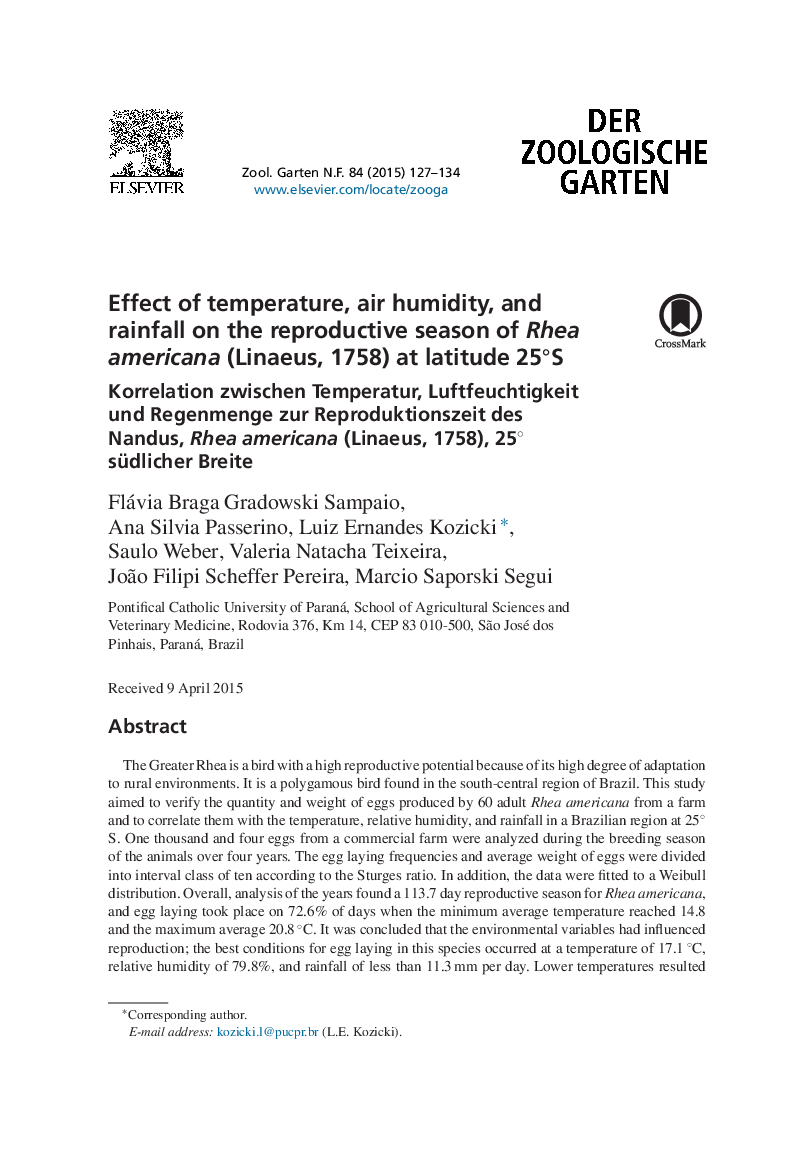| Article ID | Journal | Published Year | Pages | File Type |
|---|---|---|---|---|
| 2472825 | Der Zoologische Garten | 2015 | 8 Pages |
The Greater Rhea is a bird with a high reproductive potential because of its high degree of adaptation to rural environments. It is a polygamous bird found in the south-central region of Brazil. This study aimed to verify the quantity and weight of eggs produced by 60 adult Rhea americana from a farm and to correlate them with the temperature, relative humidity, and rainfall in a Brazilian region at 25° S. One thousand and four eggs from a commercial farm were analyzed during the breeding season of the animals over four years. The egg laying frequencies and average weight of eggs were divided into interval class of ten according to the Sturges ratio. In addition, the data were fitted to a Weibull distribution. Overall, analysis of the years found a 113.7 day reproductive season for Rhea americana, and egg laying took place on 72.6% of days when the minimum average temperature reached 14.8 and the maximum average 20.8 °C. It was concluded that the environmental variables had influenced reproduction; the best conditions for egg laying in this species occurred at a temperature of 17.1 °C, relative humidity of 79.8%, and rainfall of less than 11.3 mm per day. Lower temperatures resulted in better reproductive performance, while higher rainfall and temperatures resulted in decreased egg laying and egg weight.
